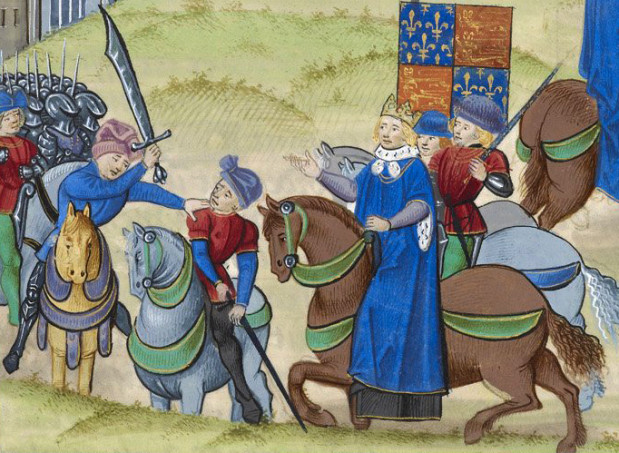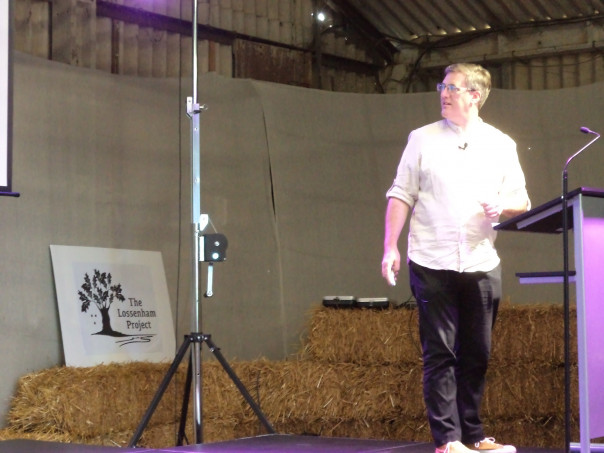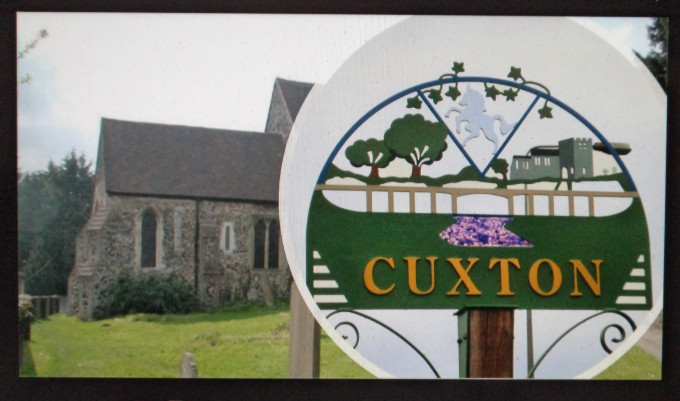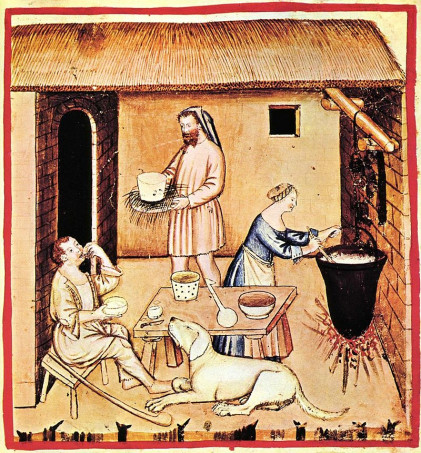This week I want to start with an event that took place at Smithfield just over 640 years ago because it was great that BBC Radio Kent had noticed that yesterday (15 June) marked the violent death of Wat Tyler, one of the iconic leaders of the Great Rising, or what the Victorians called the Peasants’ Revolt.
Now I know Year 7 students at the Royal Harbour Academy, Ramsgate, know about the Revolt [ https://blogs.canterbury.ac.uk/kenthistory/kentish-saints-rebels-and-early-kings-a-fascinating-county/ ] and one of the other leader, the priest John Ball, but on Pat Marsh’s show yesterday afternoon I was able to add something about Wat Tyler. For the man is barely commemorated in Kent – he has a ‘Way’ in Maidstone and a ‘Road’ in Greenwich/Lewisham – but really that’s all. Yet in some ways it’s perhaps not surprising. Yes, he became the premier leader of a Revolt that touched many parts of England, involved townsmen and women as well as ‘peasants’ (here don’t think straw-chewing yokel but probably a sizeable contingent of substantial farmers, as well as those with smaller holdings) and twice he might be said to have confronted King Richard II, first at Mile End and then Smithfield, but as a general rule over the centuries the fear of ‘mob rule’ has meant Robin Hood has been a much more acceptable hero than Wat Tyler.

Moreover, we know very little about Wat Tyler until he bursts on to the world stage on 6 June 1381 and 10 days later he was dead. He may or may not have been a tiler, surnames, as you will read in many history books, had become fixed by this time, but possibly as a stranger in this case it may reflect his occupation. According to some chroniclers he was Wat Tyler of Maidstone, but often their knowledge of both Kent and Essex, the main hotbeds of the Revolt, was hazy or they were writing sometime after the event, and the jury of the Maidstone Hundred called on to identify the leaders soon after these June events identified him as Wat Tyler of Colchester. Now, of course, they may have been wanting to try to protect the good name of Maidstone before the government officials and having the leader from their town would not help their cause, but equally it may be right in that a man called Abel Ker had a couple of days earlier (3-4 June) been on a recruiting drive in Essex to boost the size of the rebels’ band, arriving back in Dartford where they proceeded to wreak havoc before moving on to besiege Rochester Castle on 6 June.
So if the real Wat Tyler remains enigmatic, what about his afterlife? That is extremely interesting as I learnt when a couple of years ago I reviewed Stephen Basdeo’s book The Life & Legend of a Rebel Leader: Wat Tyler because I think he is right. Whether Tyler is portrayed as a brutish thug or sympathetically as the leader of the commons who sought redress for legitimate grievances indeed reflects and is a reflection of the society in which this portrayal is produced.

Basdeo takes his readers through the centuries, including a fascinating and little-known play from 1593 called ‘The Life and Death of Iacke Strawe’, but here I confine myself to the later 20th century. Even though neo-Marxist historians in the 1970s and 1980s, such as Rodney Hilton for the medieval period did highlight the importance of the Great Rising, outside academia it was the response to Margaret Thatcher’s flat-rate per capita ‘Community Charge’ in 1989-90, a poll-tax by another name, that brought Tyler’s name back into the popular domain. Yet for millennials this is ‘old’ if not ‘ancient’ history and even with popular history books by Dan Jones and Juliet Barker, a novel from Melvyn Bragg, and an extremely large funded project at the universities of Reading and Southampton, it will be fascinating to see if Wat Tyler and his comrade in arms John Ball can make something of a comeback in this new environment of decolonization, bridging the gap, equality and inclusivity.
Moving to other important matters this week, while Dr Diane Heath is refining her HLF funding bid for ‘Medieval Animals Heritage’, I have two Lossenham project meetings in the diary, but because the second will be after the blog comes out, I’ll concentrate on the Lossenham project wills group. This group are brilliant, and I am exceedingly grateful for all their hard work. The focus this time was the newly vamped spreadsheets, which had built on the work of the pilot project to find a way to capture information from late medieval and early modern wills that is both useful for the group and other researchers but is not so time-consuming in terms of data entry that people won’t be prepared or have the time to do it. This is a fine balancing act as anyone who has worked with such sources in this way will know and Rebecca, Sue M and Jason went through the new format before we had a group discussion. This, too, was useful because it raised several important points which will mean a little fine-tuning, but everyone agreed the rationale and formats looked very encouraging. Of course, the test will really come when we start to use it, but there is enough expertise in the ‘room’ to give confidence in the outcome. However, before it can be used it needs a glossary, an example to help inputters, a list of abbreviations and a simple set of instructions. Consequently, nobody will start using the new formats until the beginning of July to give time for this to happen and when the spreadsheets ‘reopen’ Jason has very generously agreed to move those wills on the earlier spreadsheets onto the new ones. This has several advantages, as the primary inputter in the first instance, he will quickly see if there are any unexpected issues and, once entered, they should be useful as examples for other inputters.
The meeting then had a report from Sophie, Jane and Sara about what they had been doing concerning wills from the lower Canterbury diocesan courts, and thanks to Sophie, the wills group shared drive now has lists of all the wills we will want to explore from the Rother Levels’ parishes. Sara is going to investigate over into Sussex to see if there is anything similar for the wills under the diocese of Chichester.

Annie then provided an update on wider issues relating to the project and after a further discussion on whether people felt we had a plan for the next couple of months, we agreed it made sense to meet again on Zoom in mid-July to review progress – so thanks very much everyone.
Moving to another great group, the Kent History Postgraduates met today for Pete Joyce’s presentation. Most people were able to make it and it was brilliant that Lily was able to join us from Aylesbury. As Pete said in his opening comments, there is more to the Medway area than Rochester castle and cathedral and the Chatham Historic Dockyard, and he then showed us why the history of this region of Kent should be much better known than it is. Focusing his presentation on Cuxton, Pete first demonstrated the village’s location in relation to the River Medway, the North Downs and the ecclesiastical buildings in the area. Although still a hamlet until the 1960s, since then housing estates have mushroomed to the north of what had been the major street (now Bush Road) of the settlement that led up the valley to even more of a hamlet called Upper Bush – now known for its alpacas.
Nevertheless, for all its small size, Cuxton is mentioned in Domesday (Coclestane), being in Shamwell Hundred and, as part of the land of the bishop of Rochester, there was a church and a mill, meadow land and arable but no mention of woodland. The 15 villages, 9 householders and 2 slaves had become 93 parishioners including servants by the time of Caleb Parfect’s own census of his parish in 1763, thereafter the cement and other works drawing in people to the area.

The central part of the settlement was around the junction of the main Rochester-Maidstone road, the A228, and Bush Road (the White Hart Inn is still on the A228), but the church has always been to the south on higher (and steeper ground). The church has a very long history, which to a degree is confirmed by its SE – NW alignment, the Anglo-Saxon church presumably present by the time of King Æthelwulf of Wessex’s grant to the bishop of Rochester in the mid 9th century. However, the earliest part of this Grade 1 listed building today is Norman, there having been considerable extensions to the nave in the 13th century and even more additions in the Victorian period. Furthermore, there is a Roman villa under the churchyard and Cuxton is especially know for the hoard of almost 200 flint hand axes that are now in the British Museum.
As at other churches that have been altered by the Victorians, this is something of a mixed blessing. Yes, the church gained an excellent organ in 1881, but the rood screen was moved to the back between the nave and belltower with consequent alterations and the presumably medieval font was replaced, the old font left in the churchyard until it disappeared. The parish chest with its ornate metalwork seems to have gone the same way, although why Pete is far from sure, but the church silver was lost due to a robbery in the 1960s. There are memorial boards commemorating those lost from the parish in both World Wars and currently there is a project to research the people named.
Pete has seen a photograph of what is said to be a postcard of the interior of the church from the later 19th century, but as yet he has not seen the original. In terms of dating, it would seem to pre-date the organ, which is known from the first recital given by the Rev. William Henry Nutter in early 1882, there are several gas mantles shown, but the hole in the chancel arch wall for access to the rood loft is missing. As all agreed, the picture has been coloured in some way and Pete and Jacie are going to explore this further, both having a special interest in early photography.
Pete then took us through the vicars since the early 17th century, for as well as the long-lived Rev. Caleb Parfect who spanned much of the 18th century and who was the founder of the workhouse movement – see earlier presentation reports in the blog, Cuxton has been served by churchmen such as William Laud, before he went on to become archbishop of Canterbury. Others are equally interesting, including Charles Moore from the 19th century for whom we have a considerable sermon collection, as well as his work exploring the link between gambling, dueling and suicide, and Charles Colson a gentleman archaeologist.
Following on from his fascinating presentation, Pete responded to questions and comments from his audience. As already noted, this included comments about the postcard, and then went on to explore ideas about clerical livelihoods, not just their salary and housing provision, but how important the glebe and other landholdings were for the incumbent to raise his own crops and animals. The issue of tithe also came up and Caleb Parfect’s requirement that part of his tithes should come in fresh milk daily from his parishioners at Strood.

Another topic that generated considerable discussion was the relationship between an Anglo-Saxon cemetery to the north of the village and the church site. Both Lily and Richard had ideas that might be useful to Pete, and Richard said he would give him an article reference. Following on from this, Pete talked about the quality and quantity of primary sources available for Cuxton, including probably the earliest record about inoculation for smallpox outside the medical fraternity. Also a very bizarre case about a woman who was buried in a glass coffin in the church – after a century the parishioners had had enough and she was buried in the churchyard. Consequently, all agreed that this had been a great presentation that highlighted the value and importance of microhistory in the form of parochial studies that can open up a wide range of research questions that go beyond the local to regional and national levels.
Finally, I believe Dr Claire Bartram is busy on the IHR Our Century funded project on Dover with the intention to hold an outdoor meeting in situ in early July – more to follow.
 Centre for Kent History and Heritage
Centre for Kent History and Heritage Sheila Sweetinburgh
Sheila Sweetinburgh 2916
2916

